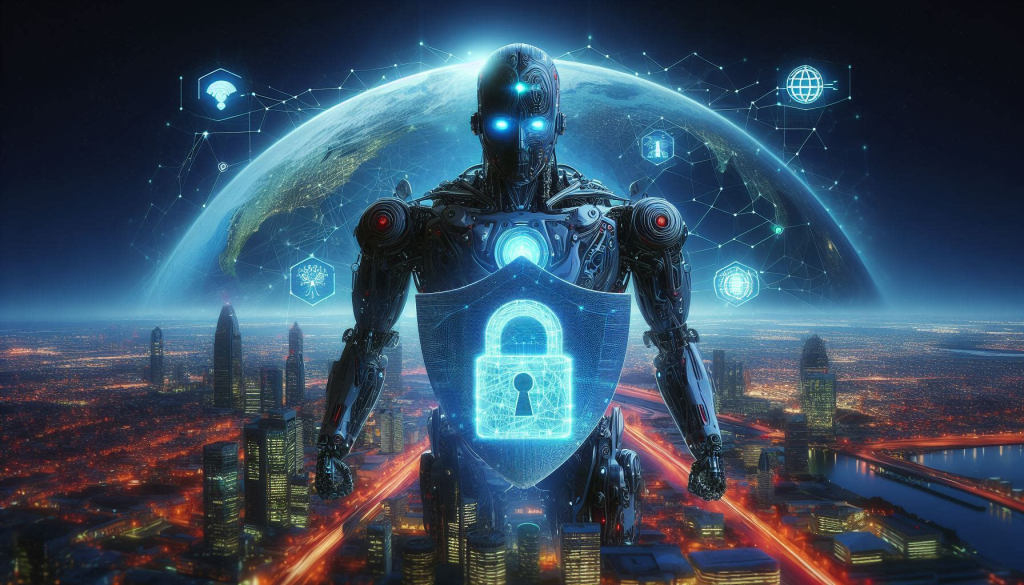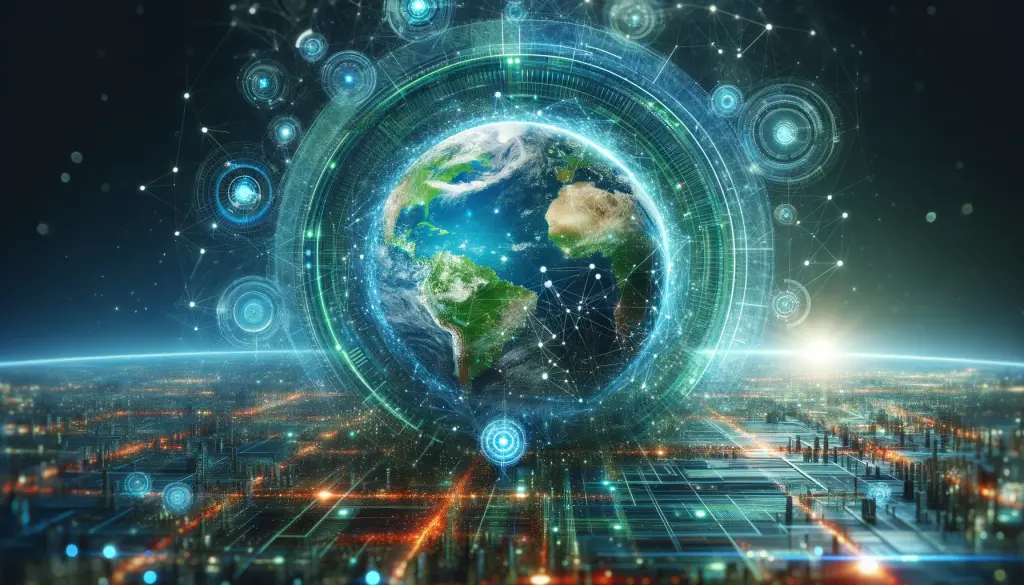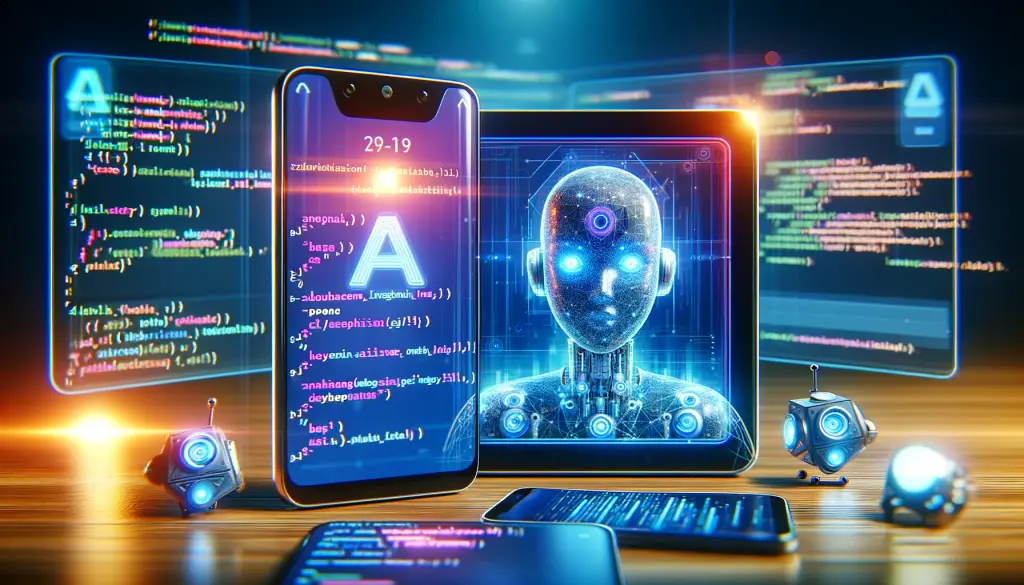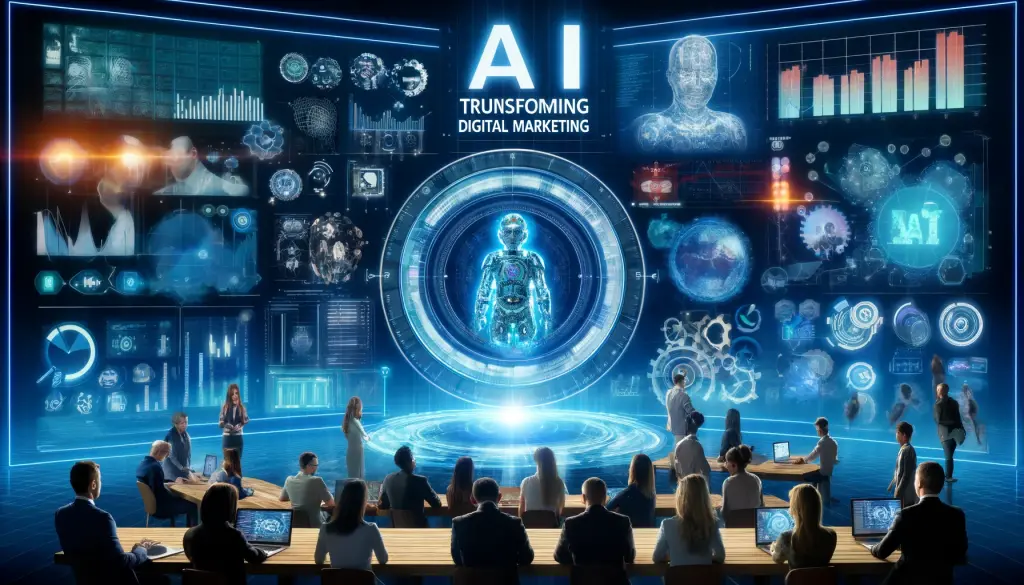The Internet of Things (IoT) represents a groundbreaking evolution in the way we interact with the world around us. By embedding everyday objects with sensors and network connectivity, IoT enables a level of communication between devices, systems, and services that was once the realm of science fiction. In the context of urban development, IoT stands as a cornerstone technology that promises to transform our cities into smarter, more efficient, and ultimately more sustainable habitats.
As urban populations continue to grow, the strain on city resources and infrastructure becomes increasingly apparent. Herein lies the relevance of IoT: it offers a pathway to optimize these resources, reduce waste, and improve the quality of life for city dwellers. From traffic management to energy conservation, IoT applications are vast and varied, each contributing to the overarching vision of smarter cities.
Sustainability is at the heart of this vision. By leveraging IoT, cities can monitor and manage their environmental impact, create cleaner transportation networks, and ensure that urban growth does not come at the expense of the planet. In essence, IoT is not just about connecting things; it’s about connecting us to a future where urban development is in harmony with the environment, paving the way for a sustainable legacy for generations to come.
This article will explore the multifaceted role of IoT in urban development, examining how it’s being used today and how it might shape the cities of tomorrow. Join us as we delve into the world of smart cities, where technology and sustainability converge to create a brighter urban future.
The Foundation of Smart Cities
Smart cities are built on the foundation of advanced IoT technologies, which serve as the eyes and ears of the urban environment. These technologies range from simple sensors that monitor temperature and air quality to complex systems that manage energy grids and traffic flows. Here’s a closer look at the foundational elements that make up a smart city:
Overview of IoT Technologies Used in Smart Cities
IoT technologies in smart cities encompass a wide array of devices and systems, including:
- Sensors: Deployed throughout the city to collect data on everything from weather conditions to pedestrian foot traffic.
- Actuators: Devices that can perform actions based on sensor data, such as adjusting street lights or signaling traffic changes.
- RFID Tags: Used for tracking assets, managing inventory, and enhancing security.
- Smart Meters: Monitor and report on utility usage, enabling better energy management.
- Connected Cameras: Provide real-time surveillance for public safety and traffic monitoring.
Infrastructure and Connectivity: The Backbone of IoT Implementation
A robust infrastructure is crucial for the success of IoT in smart cities. This includes:
- High-Speed Internet: Essential for transmitting large volumes of data quickly and reliably.
- Wireless Networks: Such as Wi-Fi, 5G, and LPWAN (Low Power Wide Area Network), which connect devices over long distances with minimal power consumption.
- Data Centers: Store and process the vast amounts of data generated by IoT devices.
- Edge Computing: Processes data closer to where it’s collected, reducing latency and bandwidth use.
Data Collection and Analysis for Informed Decision-Making
The true power of IoT lies in data analysis, which allows city officials to make informed decisions:
- Big Data Analytics: Tools that sift through large datasets to identify patterns, trends, and anomalies.
- Machine Learning Algorithms: Learn from data to predict future events and automate decision-making processes.
- Data Visualization: Converts complex data into understandable and actionable visual formats.
- Integrated Management Platforms: Combine data from various sources to provide a comprehensive view of the city’s operations.
By harnessing these technologies, smart cities can optimize resources, improve services, and enhance the quality of life for their residents. The integration of IoT within urban infrastructures represents a significant leap forward in how we manage and interact with our cities, paving the way for a more connected and sustainable future.
IoT Applications in Urban Environments
The Internet of Things (IoT) is revolutionizing urban environments, making cities smarter and more sustainable. Here’s how IoT applications are making a difference:
Energy Management and Optimization for Sustainability
- Smart Grids: IoT enables the creation of smart grids that can efficiently distribute electricity based on real-time demand, reducing waste and improving energy conservation.
- Renewable Energy Integration: IoT devices help integrate renewable energy sources, like solar and wind, into the power grid, ensuring optimal use of sustainable resources.
- Building Automation: Smart buildings use IoT to monitor and control lighting, heating, and cooling systems, significantly reducing energy consumption.
Intelligent Transportation Systems for Reduced Congestion and Emissions
- Traffic Flow Optimization: IoT sensors monitor traffic patterns and adjust signal timings to reduce congestion and idling, which in turn lowers emissions.
- Public Transit Enhancements: IoT enhances public transit systems through real-time tracking and maintenance alerts, improving reliability and efficiency.
- Vehicle-to-Infrastructure Communication: Connected vehicles communicate with road infrastructure to optimize routes, reduce travel times, and support autonomous driving technologies.
Smart Waste Management for Cleaner Cities
- Waste Level Sensors: IoT sensors in waste containers signal when they are full, optimizing collection routes and frequencies.
- Recycling Incentives: IoT systems can provide feedback and incentives for proper recycling, encouraging sustainable behavior among residents.
- Composting Solutions: IoT-enabled composting facilities can process organic waste more efficiently, reducing landfill use and greenhouse gas emissions.
IoT for Public Safety and Emergency Response
- Surveillance Systems: IoT-connected cameras and drones enhance surveillance capabilities, helping to prevent crime and monitor public spaces.
- Disaster Management: IoT devices can detect early signs of natural disasters, providing critical data for timely warnings and efficient evacuations.
- Emergency Services Coordination: IoT facilitates the coordination of emergency services, ensuring faster response times and better resource management during crises.
These applications demonstrate the potential of IoT to create more livable, resilient, and sustainable urban spaces. As cities continue to grow, the integration of IoT technologies will be crucial in addressing the complex challenges of urbanization.
Challenges and Considerations
As cities embrace IoT technologies to become smarter and more efficient, several challenges and considerations must be addressed to ensure the successful deployment and operation of these systems:
Addressing Privacy and Security Concerns in IoT Deployments
- Data Privacy: With the vast amount of personal data collected by IoT devices, ensuring the privacy of citizens is paramount. Cities must implement strong data protection measures and transparent policies.
- Cybersecurity: IoT networks are potential targets for cyberattacks. Robust security protocols, regular updates, and advanced encryption methods are essential to safeguard the IoT infrastructure.
The Importance of Interoperability and Standards
- Device Compatibility: IoT ecosystems consist of devices from various manufacturers. Interoperability standards are crucial for seamless communication and integration.
- Data Exchange: Standardized data formats and protocols enable different systems to exchange information effectively, maximizing the utility of collected data.
Overcoming the Digital Divide and Ensuring Equitable Access to Technology
- Inclusivity: As cities become smarter, it’s important to ensure that all citizens have access to the benefits of IoT, regardless of their socio-economic status.
- Education and Training: Providing education and training opportunities can help bridge the digital divide, empowering residents to engage with and benefit from smart city technologies.
By tackling these challenges head-on, cities can create a secure, inclusive, and interoperable IoT ecosystem that not only enhances urban life but also protects the rights and well-being of its inhabitants.
Case Studies and Success Stories
The implementation of IoT in urban environments has led to numerous success stories across the globe. Here are some examples of cities that have successfully integrated IoT solutions, along with the lessons learned and best practices that have emerged:
Singapore: A Smart Nation
- Smart Traffic System: Singapore’s use of IoT for traffic management has reduced congestion and improved commute times.
- Smart Water Management: IoT sensors monitor water pipes for leaks, significantly reducing water waste.
- Lesson Learned: Comprehensive planning and government support are crucial for smart city initiatives.
Barcelona: Innovation and Sustainability
- Smart Lighting: IoT-connected street lights adjust brightness based on pedestrian activity, saving energy.
- Waste Management: Solar-powered trash bins compact waste and notify collectors when full, optimizing collection routes.
- Best Practice: Engaging citizens in the development process ensures that smart city solutions meet the community’s needs.
Copenhagen: The Green Capital
- Environmental Monitoring: IoT devices track air quality and noise levels, contributing to Copenhagen’s goal of becoming carbon-neutral by 2025.
- Intelligent Biking System: IoT-enabled bikes and docking stations encourage cycling, reducing traffic and emissions.
- Lesson Learned: Sustainability goals can drive the adoption of smart technologies.
Dubai: The City of the Future
- Smart Governance: Dubai has implemented a blockchain-based system for government transactions, enhancing efficiency and transparency.
- Autonomous Transportation: Pilot projects for autonomous drones and vehicles position Dubai as a leader in transportation innovation.
- Best Practice: Bold vision and investment in cutting-edge technologies can position a city as a global leader.
These case studies demonstrate the transformative potential of IoT when applied thoughtfully and strategically. The key takeaways for any city looking to embark on a smart city journey are clear: involve citizens, plan comprehensively, prioritize sustainability, and be open to innovation. By learning from these examples, cities can navigate the complexities of IoT integration and emerge as smarter, more sustainable communities.
The Future of IoT in Urban Development
As we look towards the future, the Internet of Things (IoT) is poised to continue its profound impact on urban development. Here’s a glimpse into the emerging trends and technologies, the potential impact on city planning and living, and the next steps for cities transitioning to smart IoT solutions:
Emerging Trends and Technologies in IoT
- 5G and Beyond: The rollout of 5G networks will significantly enhance IoT capabilities with faster speeds and lower latency, enabling more devices to connect and interact in real-time.
- Edge Computing: By processing data closer to where it’s generated, edge computing reduces response times and bandwidth needs, making IoT systems more efficient.
- AI and Machine Learning: These technologies will become increasingly integrated with IoT, providing smarter analytics and autonomous decision-making capabilities.
- Digital Twins: Virtual replicas of physical assets will allow for simulation and analysis, leading to better planning and management of city resources.
The Potential Impact of IoT on Future City Planning and Living
- Urban Efficiency: IoT will drive efficiency in all aspects of city management, from energy use to traffic control, leading to a higher quality of urban life.
- Environmental Sustainability: IoT’s ability to monitor and manage resources will play a crucial role in creating sustainable cities that minimize their ecological footprint.
- Personalized Services: IoT will enable more personalized and responsive city services, tailored to the needs and preferences of individual residents.
Envisioning the Next Steps for Cities Transitioning to Smart IoT Solutions
- Strategic Planning: Cities must develop long-term strategies that incorporate IoT into their infrastructure, ensuring that technology serves the public good.
- Public-Private Partnerships: Collaborations between governments, technology providers, and community organizations will be key to the successful implementation of IoT solutions.
- Community Engagement: Involving citizens in the planning process will ensure that IoT solutions align with the needs and values of the community.
The future of IoT in urban development is not just about technology; it’s about reimagining the way we live, work, and interact within our cities. As IoT continues to evolve, it promises to bring about smarter, more connected, and more sustainable urban environments that are better equipped to meet the challenges of the 21st century.
Conclusion
As we stand on the brink of a new era in urban development, the Internet of Things (IoT) emerges as a transformative force, driving cities towards greater efficiency, sustainability, and resilience. The journey of integrating IoT into the urban fabric has already begun, with cities around the world harnessing its power to create smarter, more livable environments.
The potential of IoT to revolutionize city living is immense, offering solutions to some of the most pressing challenges of our time. From optimizing energy use to improving public safety, the applications of IoT are as diverse as they are impactful. However, the path forward is not without its obstacles. Issues of privacy, security, and equity must be addressed to ensure that the benefits of IoT are shared by all.
As we envision the future, it is clear that IoT will play a pivotal role in shaping the cities of tomorrow. By embracing this technology, city planners and policymakers can unlock new possibilities for urban innovation, making our cities not only smarter but also more inclusive and sustainable.
The narrative of smart cities is still being written, and IoT is the pen with which we will write the next chapters. It is an exciting time to be at the forefront of urban development, and the promise of IoT is a testament to the ingenuity and adaptability of cities in the face of change.
With careful planning, collaboration, and a commitment to the public good, we can look forward to a future where cities are not just smart, but wise—capable of meeting the needs of their citizens today while preserving the planet for tomorrow. The future is connected, and it is ours to shape.





